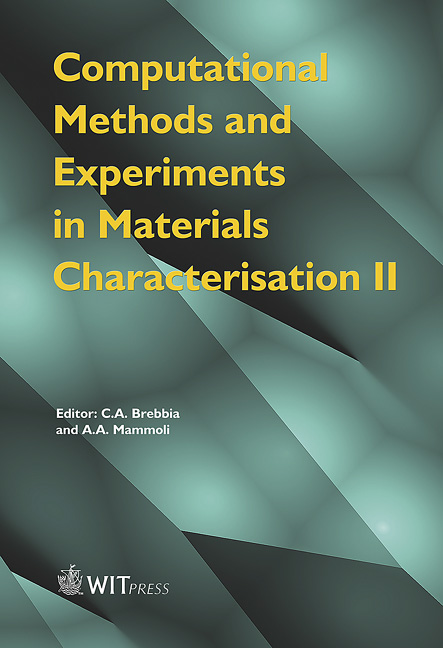Second Phase Particle Distribution And Its Effect On The Formability Of Aluminum Alloys
Price
Free (open access)
Transaction
Volume
51
Pages
10
Published
2005
Size
1,913 kb
Paper DOI
10.2495/MC050061
Copyright
WIT Press
Author(s)
Z. Chen
Abstract
Aluminum alloys have been increasingly used in the automotive industry for fuel economy. The existence of second phase particles in aluminum alloys provides damage nucleation sites during formation processes and limits the formability. Characterization of second phase particle distribution and its effect on the formability of aluminum alloys is of great importance. Distribution of Fe- and Mn-based second phase particles in Al-Mg alloys AA5182 and AA5754 is captured using microscopy and image analysis. Spatial tessellation of particle images is conducted to quantify particle distribution, such as particle size, shape (aspect ratio) and clustering. Large particles are found more often in AA5182 than AA5754. The obtained particle distribution is then applied to a so-called damage percolation model to predict formability of both alloys in stretch flanging. Keywords: aluminum sheet, ductile fracture, formability, second phase particles, microstructure, heterogeneity. 1 Introduction Modern automotive industry instigates more and more usage of new highstrength- to-weight ratio metal alloys such as aluminum and high strength steel in the fabrication of structural components. Application of advanced lightweight alloys contributes efficiently to the effort in reducing emission and promoting fuel economy in the auto industry. However, compared with traditional steel, aluminum exhibits limited formability due to ductile fracture caused by the existence of second phase particles. Experimental study showed that distribution of second phase particles in aluminum alloys is strongly inhomogeneous [1],
Keywords
aluminum sheet, ductile fracture, formability, second phase particles, microstructure, heterogeneity.





